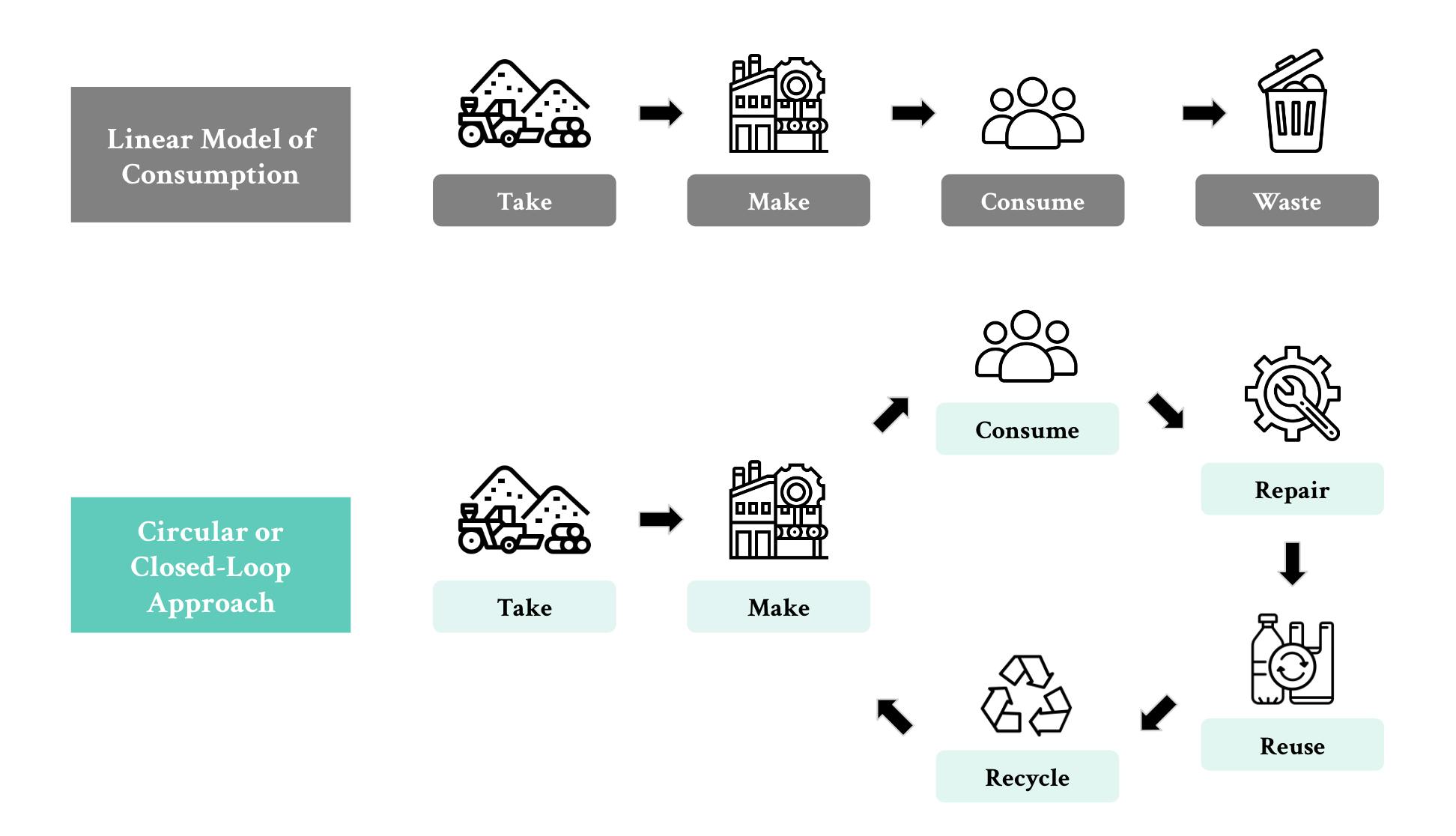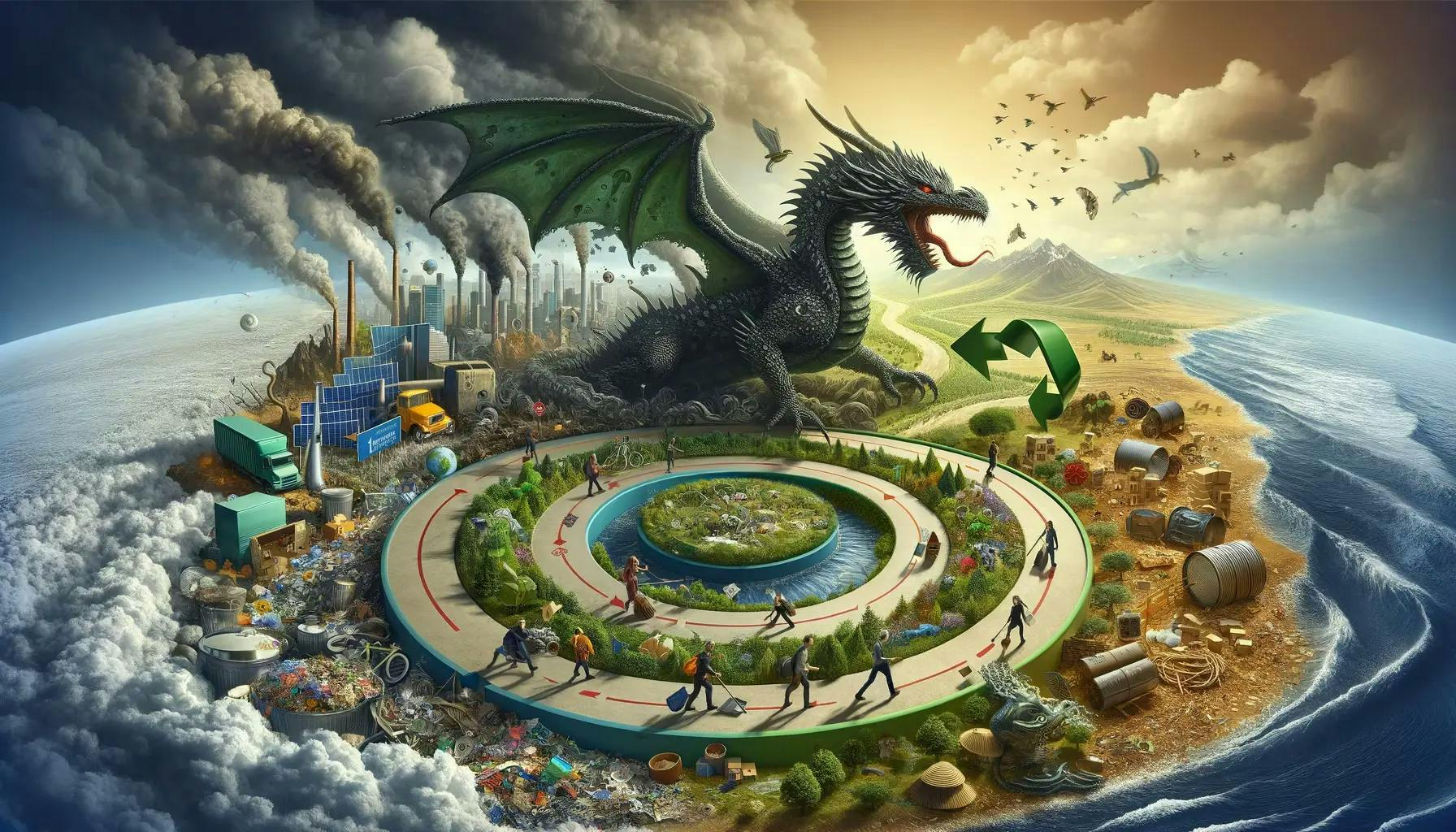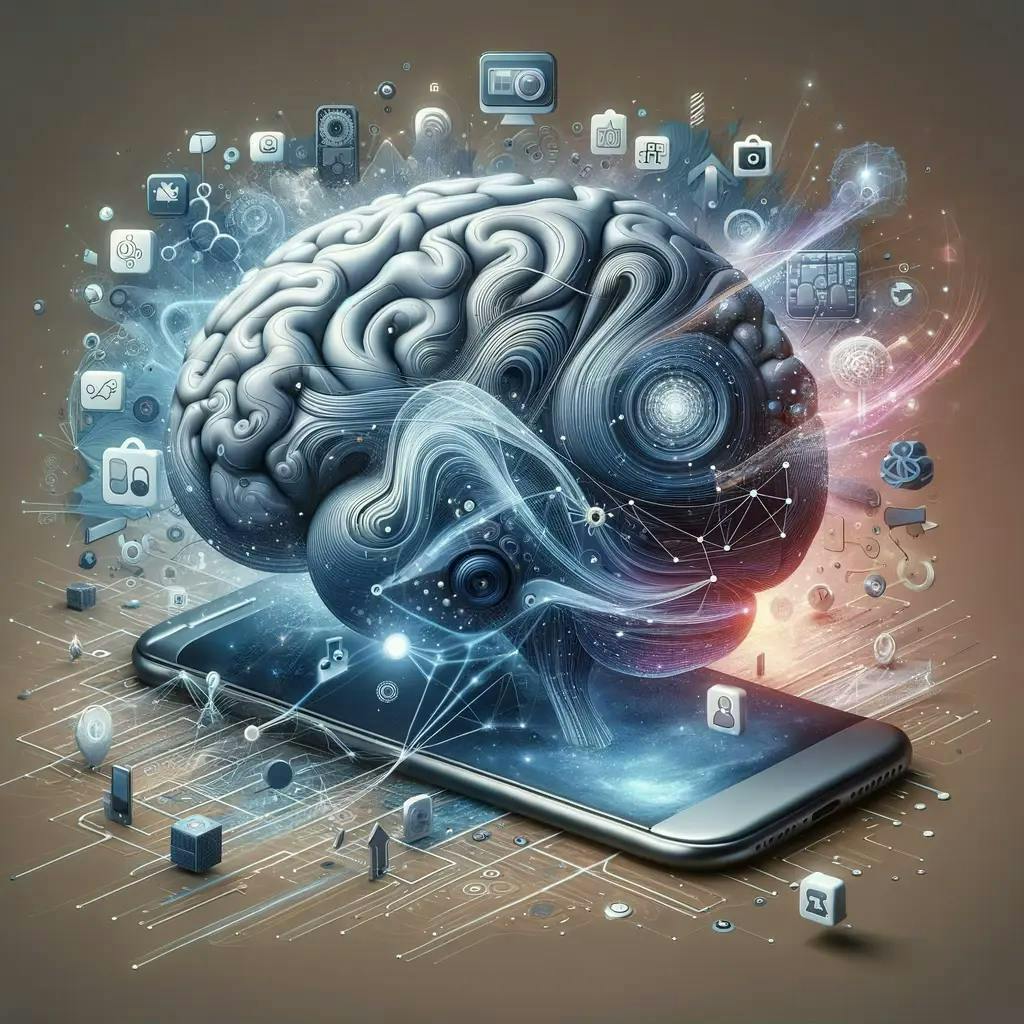Taming the Dragon of Climate Inaction: A Behavioral Science Quest Towards a Circular Economy
Let's admit it: time is running out, and it's ticking against us in solving climate change. The urgency for sustainable, climate-friendly behaviors is no longer a choice, but a necessity with potentially life-or-death consequences. We face a dragon in front of us: with unchecked greenhouse gas emissions (GHG), the global average temperature is projected to rise by up to 6 degrees Celsius by 2050.1 With global warming comes catastrophic natural disasters we are most likely unprepared for.
In fact, we don’t even have to look far into the future. The past few years have already seen unprecedented and extreme weather events, such as Category Five typhoons battering Asia, crippling sandstorms sweeping across the Middle East, floods in West Africa that claimed hundreds of lives in 2022, and, just last year, Canada's worst wildfire season on record.
Yet the answer to this crisis is already in front of our very eyes! 70% of GHG emissions are attributed to material extraction and consumption. Whether that's mining and refining metals for building construction or producing plastic for fast-moving consumer goods, large amounts of CO2 are released into the air during these processes. It doesn't stop there: some materials are sent to incinerators after disposal, further contributing to the emission problem.
The good news? We can cut these emissions by half through circular approaches to the use of these industrial materials.2 Instead of adopting the linear consumption model of take-make-waste, we close the loop by preventing resources from going to waste. This can be done by reducing or cutting back on what we consume, repairing products to give them a second chance, reusing materials for new purposes, and recycling or transforming them into other useful items. By doing these, we extend the life of resources and, most importantly, keep them out of the landfill.

Despite this potential, our current reality paints a different picture. According to the Circularity Gap 2023 Report, the global economy operates at a mere 7% circularity, and we've seen a pretty concerning downward trend over the years. That means we've been consuming more and more new materials that are either accumulating into litter around us or potentially never seeing the light of day in the depths of our landfills!
While parallel solutions — like pro-climate infrastructure, policy-making, and business model revamping — are all important, we believe what is key here is realizing the ideals of a circular economy. Our tendency to adhere to a linear consumption model that harms the planet can often be traced to us falling prey to cognitive biases deeply embedded in our psychology.
Behavioral Science, Democratized
We make 35,000 decisions each day, often in environments that aren’t conducive to making sound choices.
At TDL, we work with organizations in the public and private sectors—from new startups, to governments, to established players like the Gates Foundation—to debias decision-making and create better outcomes for everyone.
Leveling Up Our Ancient, Unwilling Brain
“I need to prioritize my immediate needs. Climate change doesn't feel urgent and I’d rather not concern myself with things unrelated to my daily survival concerns.”
We are wired for survival. Our evolutionary instincts tend to tackle immediate threats and prioritize short-term gains in front of us. It’s a natural response that might lead people to subscribe to the status quo of overconsuming, without thinking of the long-term environmental consequences of our actions.
One of the many ways we can hack our ancient brains is through impactful storytelling — which has been proven to be significantly more effective than informational appeals at promoting eco-friendly behavior.3 As humans, we are programmed to respond to narratives that appeal to our emotions. Stories of hope and solidarity, with tones of urgency, can be a game-changer for behavior change towards a circular economy. This is why, for example, the infamous picture of a polar bear stranded on melting icebergs has become a stirring symbol of climate change, tapping into people’s love for animals while simultaneously showing how fragile our planet is.
“It’s too much work to be environmentally friendly! The effort required feels burdensome and the benefits seem distant anyway, so I’ll stick with what’s convenient for me.”
Moreover, there's a common misconception that circular behaviors require a lot of effort (think flipping old clothes or living a zero-waste lifestyle) or can be expensive (think repairing electronics or investing in energy-efficient appliances) — all seemingly without immediate tangible benefits. Instant gratifications have a tremendous magnetic pull on our choices, after all! This discounting can manifest into impulsive choices or preferences geared towards what's affordable or convenient.
For example, single-use plastics are everywhere: our to-go coffee cups, our daily skincare products, our plastic-wrapped snacks, and let's not forget about the excessive amount of bubble wrap from our online shopping. Unfortunately, the list goes on. Since these are marketed as cheap and widely accessible, our instincts lead us to develop a vicious habit of unsustainable plastic use and disregard the impact associated with its disposal, such as its accumulation in landfills. This also blinds us to the fact that while reusable plastics may cost us more upfront, they will actually save us time and money in the long run!
Just like individuals, companies also experience friction that prevents them from engaging in environmentally sustainable behaviors. To significantly contribute to a circular economy, organizations need to rethink product designs to ensure quality and durability for the reusability or recyclability factor of the materials used. They may even consider transitioning to closed-loop manufacturing or circular supply chains. Adopting these may require great initial investment, but in time will align with their financial and operational priorities.
Offering rewards, such as financial incentives, has historically eased these frictions and fueled the motivation to take action by shortening the mental discounting process. On a smaller scale, some coffee shops already offer immediate discounts when customers bring reusable tumblers for their beverages. On a larger scale, governments like the European Union offer incentives, tax breaks, and grants to businesses and innovators that focus on circular economy solutions. These rewards serve as catalysts to drive collective and conscious shifts toward making circular consumption the norm.
Combating Green Ignorance and Uncertainty
“I don’t fully understand the complexities of climate change. I’m not a scientist, so I’m not equipped to make even a small dent in addressing it.”
Awareness is always the first step towards mindful action. But once we know the problem exists, how do we cross the bridge towards figuring out how to solve it? For example, if people are uninformed about recycling initiatives or infrastructure available to them, this option might not come first to mind. This “out of sight, out of mind” phenomenon was observed in a study where the absence of messages about food waste at a buffet significantly lowered diners’ intentions to reduce their food waste.4
People often need hand-holding and reminders to take specific actions or to build new habits. Initiatives aimed at facilitating circular behaviors should be crystal clear and concrete on the steps one can and should take.
“But there’s so much conflicting information out there about climate change and its exact consequences. Why do I need to take action now? I’ll just wait for things to become clearer.”
Despite progress in communicating the consequences of climate change, various studies make different — or even opposing — claims, or share them in ways that do not stick with people. Many remain unaware or even misinformed about the ways they can help move the needle.
Bridging these knowledge gaps is key to inspiring individuals to make green choices and behaviors that are aligned with circular economy goals of minimizing environmental impact and preserving our natural resources towards a sustainable future for generations to come. However, this first entails an understanding of the general awareness level, attitudes, and factors that influence decision-making.
For example, the World Bank wanted to increase the adoption of improved cookstoves in Uganda to reduce household fuel spending and, at the same time, reduce indoor pollution. Our behavioral diagnostic research showed that awareness, trust, and access are the key barriers to adoption. With that clarity about Ugandans, we designed interventions to establish access points and create a centralized communication line to reduce informational barriers. These led to 72,535 improved cookstoves successfully sold in the two years following our research.
Defrosting Environmental Numbness
“All this news about climate change is monotonous; it’s the same things over and over again! I find it hard to emotionally connect with this issue and I’ve lost the drive to act.”
We are bombarded with a constant stream of climate-related news. Alarming updates of rising global temperatures or melting polar ice caps circulate on social media. The principles of reduce-reuse-recycle echo through the halls of our schools. Flip on Netflix, and you'll find a trove of documentaries vividly painting the picture of how climate change is affecting humanity and wildlife. As a result of repeating this wealth of information, we’re prone to become desensitized. Some people experience “environmental numbness” or an emotional detachment that makes it difficult for them to maintain a level of engagement and motivation to act urgently.
As we are reminded time and time again to move faster toward action, we find a way to overcome our environmental numbness. One way of thawing its icy grip on us is to ignite it with emotional messaging that can rewire our brains and rekindle our commitment to sustainability. In a study conducted in both academic and workplace settings, news videos on climate change conveying emotions of sadness, fear, anger, contentment, and hope significantly influenced pro-environmental behaviors.5
However, emotional messaging alone should not be the end goal. For this strategy to resonate enough to inspire action, we should take into account diverse backgrounds and sensibilities, ensuring that any form of climate change communication is culturally appropriate. For example, in our collaboration with the City of Rome, we crafted behaviorally informed messaging strategies to gain buy-ins from Romans on the upcoming ban on all diesel vehicles to reduce smog in the city. What proved effective was designing these messages to align with their values, sense of national pride, and desire to preserve the rich history of their ancient city.
Slaying Climate Inaction: Dispelling Optimism Bias and Reclaiming Control
“Climate change is a problem for future generations, not for me! I won’t personally be affected by it, so why even bother?”
There is a sense of complacency among some people who optimistically believe that climate change won’t impact them directly now or anytime soon… or ever. This makes them unmotivated to change their consumption habits in any way.
“I’m just one out of eight billion people in this world. Nothing I do to save the planet will matter. It’s beyond my control.”
Similarly, when people deeply believe they can’t reduce GHG emissions, they won’t feel motivated to even try. We humans crave control and the perception that our individual actions won't make a difference can lead to learned helplessness. Since our decisions are greatly influenced by the way information is presented to us, we can give people back their sense of control by framing environmental messages to be easily digestible, and more importantly, actionable.
There are a few different ways to go about this. For example, to increase recycling intentions and behaviors, one study showed that exposure to concrete, loss-framed messages (“Think about what we will lose if we don’t recycle” rather than “Think about what we will gain if we recycle” ) is key.6 This appeals to people’s aversion to loss, prompting them to take action. In a similar vein, another study highlighted the impact of emphasizing the present instead of the future (“Recycle for a better today” rather than “Recycle for a better tomorrow”).7 This temporal framing can empower people to realize the urgent role they have in this environmental crisis.
Indeed, we have a long way to go in this quest before we close the loop. While advocating for pro-climate policies and systems, we all must make some major mindset shifts for this economy to become a reality. These insights behind behavioral barriers are powerful weapons that we can wield to defeat the dragon of climate inaction and triumphantly forge a (circular) path toward a greener planet and a sustainable future for all.
References
- OECD Environmental Outlook to 2050: The Consequences of Inaction - Key Facts and Figures. (2012). Retrieved from https://www.oecd.org/env/indicators-modelling-outlooks/oecdenvironmentaloutlookto2050theconsequencesofinaction-keyfactsandfigures.htm
- What is circular economy and why does it matter?. UNDP Climate Promise. (2023, April 24). https://climatepromise.undp.org/news-and-stories/what-is-circular-economy-and-how-it-helps-fight-climate-change
- Morris, B. S., Chrysochou, P., Christensen, J. D., Orquin, J. L., Barraza, J., Zak, P. J., & Mitkidis, P. (2019). Stories vs. facts: triggering emotion and action-taking on climate change. Climatic change, 154, 19-36.
- Huang, Y., Ma, E., & Wang, D. (2021). Message framing strategies, food waste prevention, and diners’ repatronage intentions: the mediating role of corporate social responsibility. Journal of Sustainable Tourism, 29(10), 1694-1715.
- Russell, S. V., & Ashkanasy, N. M. (2021). Pulling on heartstrings: Three studies of the effectiveness of emotionally framed communication to encourage workplace pro-environmental behavior. Sustainability, 13(18), 10161.
- Grazzini, L., Rodrigo, P., Aiello, G., & Viglia, G. (2018). Loss or gain? The role of message framing in hotel guests’ recycling behaviour. Journal of Sustainable Tourism, 26(11), 1944-1966.
- White, K., MacDonnell, R., & Dahl, D. W. (2011). It's the mind-set that matters: The role of construal level and message framing in influencing consumer efficacy and conservation behaviors. Journal of Marketing Research, 48(3), 472-485.
About the Author
Jestine Cabiles
Jestine has a degree in Communication Research and a master's degree in Strategic Marketing and Data Analytics. Prior to joining The Decision Lab, she helped grow companies in the Philippines through data-driven consulting and helped accelerate a market intelligence and social listening platform in France through product marketing. Outside of work, she is an impact entrepreneur with a passion for environmental sustainability.




